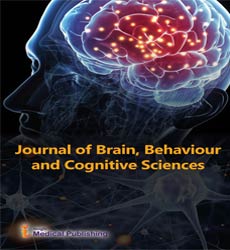Commentary on Brain, Behaviour and Cognitive Sciences
Henry A Lester*
1Department of Biology, California Institute of Technology, California, USA
*Corresponding Author:
- Henry A Lester
- Department of Biology,
- California Institute o f Technology, California, USA,
- Tel: 6 26 3 95 4 945
- E-mail: laster12@caltech.edu
Received Date: July 07, 2021; Accepted Date: July 22, 2021; Published Date: July 29, 2021
Citation: Lester HA (2021) Commentary on Brain, Behaviour and Cognitive Sciences. J Brain Behav Cogn Sci Vol.4 No.4:e003
Abstract
It is a field of neuroscience that studies the basic processes behind brain and central nervous system illnesses and disorders (CNS). The majority of previous developmental neuroscience studies on cognitive control looked at variations in the amplitude of brain activation between age cohorts, which limited conclusions about genuine developmental changes on an individual level. We investigated developmental changes in brain activity during cognitive control during adolescence using longitudinal functional magnetic resonance imaging (fMRI) data, as well as longitudinal brain-behavior correlations.
Description
It is a field of neuroscience that studies the basic processes behind brain and central nervous system illnesses and disorders (CNS). The majority of previous developmental neuroscience studies on cognitive control looked at variations in the amplitude of brain activation between age cohorts, which limited conclusions about genuine developmental changes on an individual level. We investigated developmental changes in brain activity during cognitive control during adolescence using longitudinal functional magnetic resonance imaging (fMRI) data, as well as longitudinal brain-behavior correlations. The proposed method aims to provide insight on the developmental trajectories of cognitive control-related brain function among individuals, while also taking age-related behavioural changes into account, which might help to promote novel conceptualizations of systematic brain development and improve existing neural systems models of cognitive control. Although the goal of cognitive science is to explain behaviour and brain function in the actual world, for historical and practical reasons, it is not possible to do so. We examine a growing amount of data that image proxies and genuine, physical things differ in behaviour and brain function. We also suggest a novel framework for immersive neuroscience that combines two approaches: the classic build-up method of gradually adding simpler stimuli, activities, and processes, and the newer teardown method of starting with reality and appealing simulations.
One of the main symptoms of schizophrenia is cognitive impairment, which is predictive of functional results and hence relevant for therapeutic objectives. Antipsychotics now on the market primarily target dopaminergic/serotoninergic neurons and receptors in the brain, rather than addressing cognitive impairments. Apart from studying the neurological processes that drive schizophrenia, new data suggests that glial cells play an important role in brain structure development and cognitive functioning. Although the exact cause of astrocyte dysfunction in schizophrenia is unknown, there has been evidence of changes in gene expression and astrocyte products in schizophrenic patients. We emphasized recent developments in the research of the influence of astrocytes on anomalies in glutamate transmission and impairments in the blood–brain barrier to further examine the function of astrocytes in schizophrenia. To investigate schizophrenia-related cognitive impairments and unpleasant symptoms, researchers used new animal models and behavioral techniques. We also highlighted a number of experimental methods that may be used to better understand the role of astrocytes. An extra astrocytic approach, rather than concentrating on schizophrenia as a neuron-specific illness, gives fresh and promising insight into its causative processes and therapy. It's worth looking into the role of astrocytes in the development of schizophrenia and other brain diseases.
Cognitive scientists have discovered a set of processes that are shared by all sensory, perceptual, and cognitive skills and are linked to age- and disease-related cognitive losses. These strategies also help to build and maintain the functional coherence of large-scale brain networks that underlie sophisticated cognition. Moreover, these brain and cognitive patterns are linked to a variety of health outcomes, implying that at least some of the underlying mechanisms are shared by all biological systems. Mitochondrial activities, such as cellular energy generation and oxidative stress management, are ideally positioned to explain the relationships between the brain, cognition, and health, among other things.
Open Access Journals
- Aquaculture & Veterinary Science
- Chemistry & Chemical Sciences
- Clinical Sciences
- Engineering
- General Science
- Genetics & Molecular Biology
- Health Care & Nursing
- Immunology & Microbiology
- Materials Science
- Mathematics & Physics
- Medical Sciences
- Neurology & Psychiatry
- Oncology & Cancer Science
- Pharmaceutical Sciences
